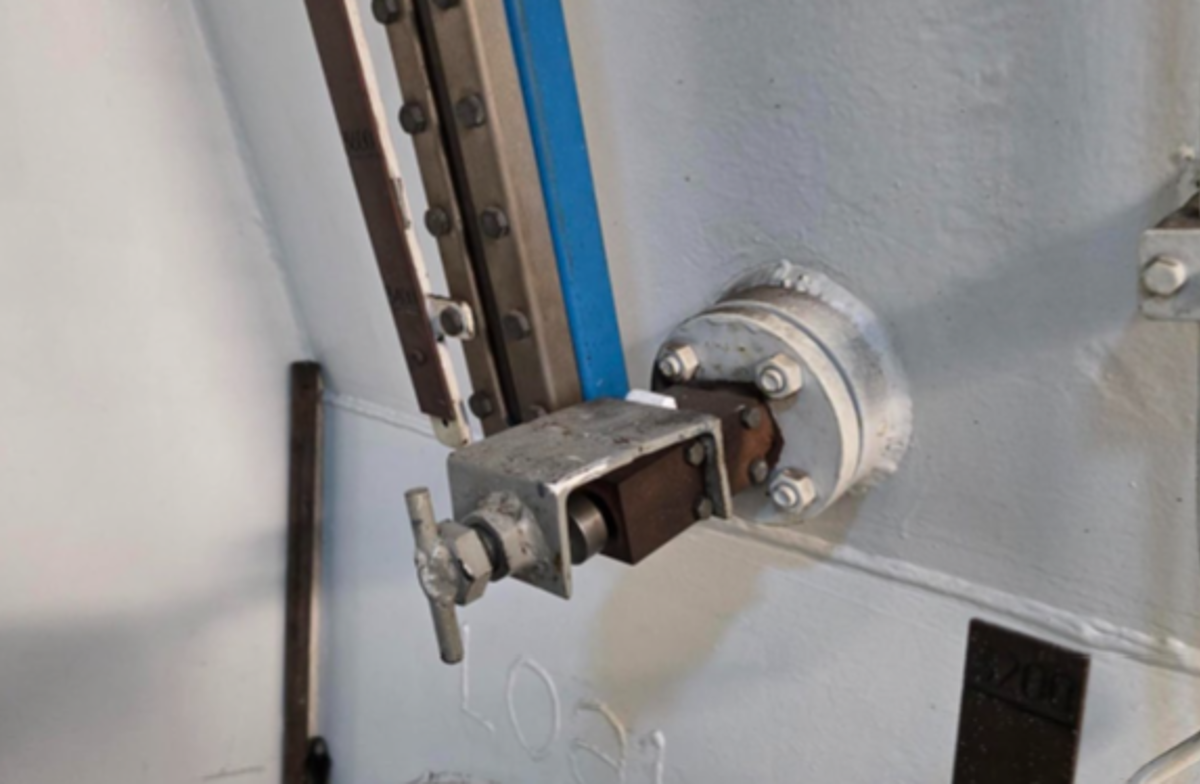Tampering with approved safety devices
- Safety Flash
- Published on 25 September 2024
- Generated on 15 December 2025
- IMCA SF 19/24
- 2 minute read
Jump to:
During a client inspection, the sight glass on a vessel main engine lubricating oil storage tank was found to have been fitted with an unauthorised and homemade ‘clamp’.
What happened?
An unauthorised ‘clamp’ was installed on the storage tank without any consideration for the potential consequences. This clamp kept the self-closing valve open at all times, contravening mandatory regulations, company standards and exposing the crew, the vessel and the environment to a significant fire, safety and environmental risk.

Showing a home-made clamp which ought not have been there
Why did it happen?
- The modification was made to save time during a routine task, without due consideration to the potential consequences and hazards.
- No onboard routine inspections, safety walk-rounds, observations or interventions had raised a concern regarding the modification.
Actions taken
- Thorough search to ensure no such other or similar devices are installed.
- Reminded people of their responsibility to maintain a safe workplace and to raise concerns where any safety devices may have been modified.
- Ensured all personnel are aware that tampering with any valves, alarms, safety devices or other approved measures intended to maintain the safety of the crew, vessel or the environment are unacceptable and will lead to disciplinary measures.
- Daily routines and planned maintenance tasks ought be carried out as per instructions or procedures – there ought be no deviations from the instructions or modifications are made to equipment without the proper approvals or a Management of Change process.
- Ensure that all onboard routines, inspections and walk-rounds consider the integrity of safety devices and highlight any concerns.
Related Safety Flashes
-
IMCA SF 09/19
3 May 2019
-
-
IMCA SF 28/20
28 September 2020
-
-
IMCA SF 06/20
19 February 2020
-
-
IMCA SF 28/22
13 December 2022
-
IMCA Safety Flashes summarise key safety matters and incidents, allowing lessons to be more easily learnt for the benefit of the entire offshore industry.
The effectiveness of the IMCA Safety Flash system depends on the industry sharing information and so avoiding repeat incidents. Incidents are classified according to IOGP's Life Saving Rules.
All information is anonymised or sanitised, as appropriate, and warnings for graphic content included where possible.
IMCA makes every effort to ensure both the accuracy and reliability of the information shared, but is not be liable for any guidance and/or recommendation and/or statement herein contained.
The information contained in this document does not fulfil or replace any individual's or Member's legal, regulatory or other duties or obligations in respect of their operations. Individuals and Members remain solely responsible for the safe, lawful and proper conduct of their operations.
Share your safety incidents with IMCA online. Sign-up to receive Safety Flashes straight to your email.